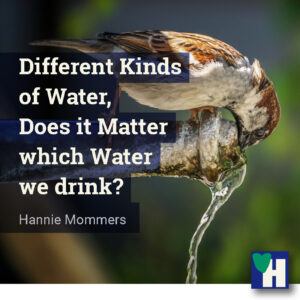
We used to only drink bottled water when we were on vacation. As soon as we crossed the Dutch border, my parents urged us, kids, not to drink from the tap, because we would get sick. That is so ingrained that I am still reluctant to drink water from an unknown tap.
Tap water is 30 to 1.300 times better for the environment than bottled water because of the non-polluting production process of the packaging and simpler transport. Although the purification of the water needs energy as well.
It is also 150 to 500 times cheaper than bottled water. For 1 euro, a Dutch person can daily drink 1,5 litres of water for a year.
Some of the links are affiliate links. As an affiliate associate, we earn a commission when you purchase any of the products offered through the shared links at no extra cost for you. This helps us maintain this website.
Table of contents
Different kinds of water
Tapwater tastes different in almost every country. Most of the time it is safe. Springwater is bottled groundwater. Depending on the source, mineral water contains all kinds of nutrients.
Is tap water as safe as we think?
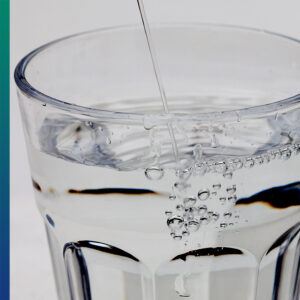
The source of Dutch drinking water is groundwater and surface water. According to the RIVM (National Institute for Public Health and the Environment), half of the Dutch groundwater sources contain more foul matter than is permitted. Agriculture, sewerage, industry and old soil contamination cause this pollution.
And the surface water is also polluted. It contains remnants of medicines, pesticides, cosmetics, fire retardants, plastics and nanoparticles. The RIVM considers “it is not good, but it cannot harm our body” (!). Hmm, I wonder.
The European Commission has registered about 10.000 chemicals. According to the Dutch Drinking Water Decree, a water purification company only has to test drinking water for 60 of those 10,000 chemicals.
It won’t be much different in other countries. In my view, the permitted standards are too high and should be lowered.
In Southern Europe and the US, chlorine is added to the water to eliminate pathogens. When we were travelling in the US the first time and ordered Cola in a cafe, it would sometimes taste of chlorine. Yikes. Do they still add tap water to a concentrate, I wonder?
Should tap water be banned?
Spanish tap water is subjected to 5x more tests than bottled water. EU countries must comply with European standards. We can assume that a certain degree of quality is achieved in Europe.
Globally, 88% of diarrheal diseases are the result of an unhealthy water supply and poor sanitation and hygiene.
It seems to me that if the groundwater is polluted, that also applies to mineral water. With the disadvantage that mineral water is not purified. In addition, most mineral water is packaged in plastic bottles that are part of the problem.
So I don’t ban tap water myself. We have a water filter in the basement and we filter the drinking water once more. Unfortunately, it is not tested afterwards, so I have no idea what contamination remains.
Different kinds of Water
Tap water
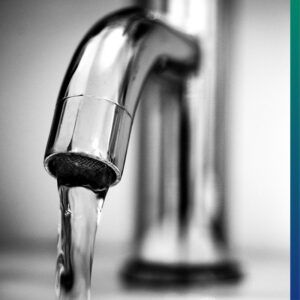
When travelling, we regularly come across signs of “Undrinkable water” in the toilet areas in parking lots or on campsites. We filter the water that is drinkable with our Brita jug. That way we don’t have to buy plastic bottles.
In the Netherlands there is one type of water for drinking, showering or flushing the toilet. Other countries have greywater in addition to tap water. That is wastewater – without faecal contamination – which is used, for example, for washing clothes or filling the swimming pool.
Spring water
This water is extracted from natural or subterranean sources. It is not further treated or purified, so it ends up pure in the bottle. Sometimes it is extracted from the same layer in the ground as tap water.
Natural mineral water
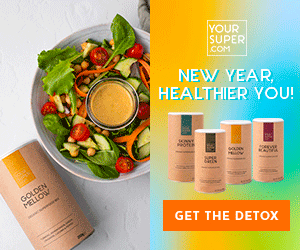
This type of mineral water comes from natural sources that are microbiologically healthy. Mineral water does not have to meet the requirements of tap water.
Mineral water with a low mineral content
This variety is low in magnesium and calcium. It is especially recommended for babies and people with kidney problems.
Water with a high mineral content
This type of mineral water contains a lot of magnesium and calcium. The result is water with a high salt concentration that is not suitable for people with kidney problems.
If the label states that it contains more than 0.02 grams of salt (20 milligrams of sodium) per 100 millilitres, the water contains more salt than there is on average in tap water. One of the few Spanish mineral waters that are packaged in glass is Vichy Catalan. It’s so salty that I don’t want it for that reason.
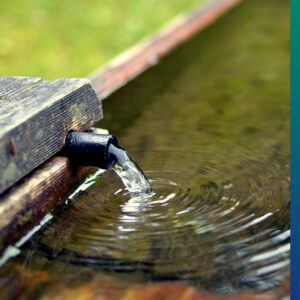
Water that is low in sodium
This type of water is more recommended for people with kidney problems and problems with high blood pressure. It is also suitable for people with heart or fluid retention problems.
Water that contains a lot of sodium
Unlike water that is low in sodium, this type of water has a high salt content. It is suitable for professional athletes to recover their bodies after competitions.
Water with sulfate
This type of water is also called well water and contains more than 200 mg of sulfate. Despite its unpleasant odour, this type of water has regenerative effects, making it very beneficial for the skin.
Iron-containing water
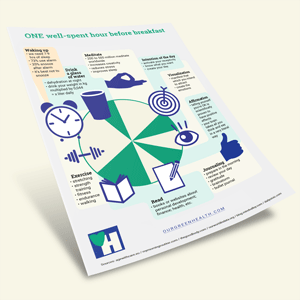
Do you want to know what these are?
> > > Download my infographic about a well-spent hour before breakfast < < <
As the name implies, iron-rich water contains large amounts of iron. It is recommended for people with anaemia or low iron.
Hard water
Hard water is water that contains a lot of calcium. It is recommended for children, the elderly and pregnant women. It helps the body absorb calcium.
Magnesium-rich water
This type of mineral water can be very helpful as it has laxative effects. It can also combat stress and help to recover muscles after intense physical activities. Some experts also believe that drinking magnesium-rich water can lower cholesterol.
Sparkling spring and mineral water
Carbonated water has a high bicarbonate concentration and is slightly more acidic than non-carbonated water. But it is not so acidic that it is bad for your teeth.
Thanks to the sparkling effect, this type of water is good for digestion. In addition, it can also help combat acid reflux.

Sparkling water is also viewed as a good alternative to soda drinks. If you are exercising it is better to drink plain water. The gas in the water can make you feel bloated, which is far from pleasant when exercising.
Flavored water
In the supermarket, you can also buy flavoured water, for example with lemon, peach or mint. If only a taste aroma has been added, this flavoured water does not provide calories, but when acids, for example, citric acid, are added, it is less good for the teeth.
It’s easy to make flavoured water yourself. Some leaves of a herb. Pieces of lemon or orange. Some drops of essential oil.
Water kefir
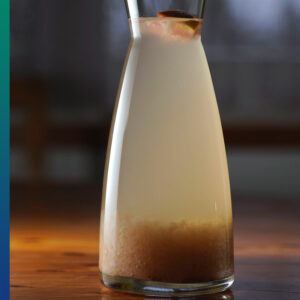
Water kefir is a fermented drink and its effect is comparable to regular kefir, which is made from milk. It is a probiotic full of minerals and vitamins, a symbiotic culture of bacteria and yeasts.
I made water kefir for a few months because it would help with the bloating that I was suffering from at the time. It is very laborious and because it is a living organism, you cannot leave it for a while. Then the “grains” die.
I liked it. It is slightly sparkling and a great replacement for soda drinks. Because of all the needed work and care, and because it still contains some sugar, let it be less than soda drinks, I gave the kefir grains to a friend after a while.
Is our water safe?
It may be clear that we have to trust our institutions and presume our water is safe to drink. Hopefully, you also see where the vulnerabilities are in our water supply. We can do a lot ourselves to improve the quality:
- Limit the use of medication. Mind you, only as far as it is wise. I do not promote unhealthy decisions;
- Quit using plastic bottled water;
- Use ecological cleaning products;
- Fertilize the kitchen garden organically;
- . . .
Can you add more activities to this list? Tell me in the comment box below.

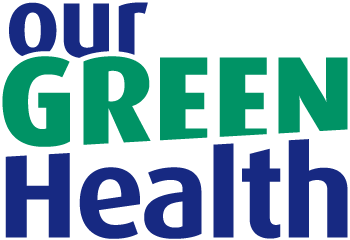
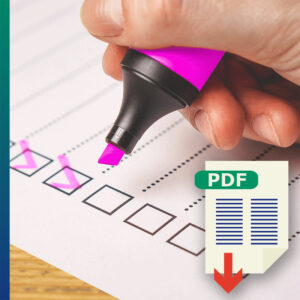
Having concerns about the safety of the water we drink is normal and justified. Clean water is and has been the essential element of life, and we must continue treating it as such.
Tap water is safe (at least where I’m from), but I’ve been to tons of other countries and cities where it’s not recommended to drink it.
I always advise everyone to do a lab test to determine whether the water they’re drinking is safe to consume. I get water from a mineral spring nearby where I live, and it’s undoubtedly one of the drops of water you can have.
Take care of your health, people, and stay safe!
Is it easy to do a lab test, Gorjan? I wonder if it is something we can do our selves. Because in that case I could check my Brita water. 🙂
Water is a precious commodity that many in first world countries do not always appreciate. It’s important to write about this. I live in a country where water isn’t always available, and that can be hard sometimes.
Concerning tap water, some people here tell me that it’s safe, and others say it isn’t. In my area, we get water straight from an underground well, but locals do not recommend drinking from it due to a high content of copper, I think (but I am not entirely sure).
Here in Mexico, we buy purified water in big, hard plastic containers of 20 liters. When it’s empty we take it back to the store and exchange it for a new one or we go straight to the water company, get the containers cleaned and they are re-filled with fresh water at a minimal cost.
It works very well that way and the plastic is not thrown away, but re-used all the time. I avoid buying plastic water bottles and I especially hate those small sized plastic bottles – what a waste …
How briljant, Christine, those refillable containers. I wish they would do that over here in Spain as well. More than 5 billion liters of bottled water are used in Spain every year. Can you imagine how much single use plastic that is? Horrible.
You’re right, those small bottles are even worse. I have a glass one in a silicone jacket that I use when I go hiking. 🙂
Hi Hannie,
Thanks for writing this article on different kinds of water.
I’m fortunate to live in Canada where the water supply is usually pretty clean, as far as I know.
This article has made me think that perhaps I should find out more. I’ve been told that a simple solution is to drink lots of tea, as once the water is boiled, most biological contaminants are killed.
A former coworker of mine once told me about “Kangan Water”, which is apparently made with the use of a very high quality home filtration system. It’s connected to some kind of MLM, so I never got involved further.
Then of course there are all kinds of home filtration systems, and the jury is out on which ones are the best and most cost effective.
Good food for thought, though.
Thank you for putting this post together!
Hey Michael. That cooking the water helps is partially correct. Heating kills bacteria, but unfortunately it doesn’t remove many chemical substances.
I can imagen you didn’t go into Kangen water because it’s MLM. I hate MLM, so I wouldn’t either. I hadn’t heard of Kangen before, so I can’t tell you anything about it. :-S
Hi Hannie.
Water is one of the most important things we need to maintain good health. I find it heartbreaking that so many people don’t have access to clean drinking water.
I never liked the idea of chlorinating the water and some places even add fluoride.
All these chemicals will eventually catch up with us and unfortunately, it won’t be in a good way.
We live in a rural community so are on a private well. We only drink our tap water and don’t purchase bottled water unless travelling to other countries.
When our youngest son lived in an apartment in town he found he couldn’t drink his tap water as it was too heavily chlorinated. You could really smell it when you ran the tap. Because of this he would often bring jugs home and take some of our well water to have as drinking water.
He has since moved to another province and uses a Brita filter for his tap water.
I totally agree with you, Deb, it’s heartbreaking that so many people don’t have access to clean water. I regularly donate to companies that take care of water supplies in countries in Africa and such.
In my opinion all these chemicals already have caught up with us. Why else would we have such trouble controlling the present pandemic? And it goes on and on. At times I have a really hard time staying optimistic about the human race. Exploring is good, exploiting is not.
Take care!
Hi Hannie. Great article about a very important topic.
I agree that all of these chemicals have already caught up with us! Just look at the current state of health of humanity, and know that overall, it’s declining. The quality of life many people are experiencing is ‘nothing to write home about!’
Our bodies are more than sixty percent water and this water is used to carry out so many different functions that directly affect our health. So when we are consuming water that is of questionable quality, and even toxic, we are not enabling our body’s to repair themselves or just maintain a healthy state of being.
“It may be clear that we have to trust our institutions and presume our water is safe to drink.” Ummmm, really?
Do you trust the corporate driven goals of ‘maximizing profit’ to do what’s best for us?
Again, we just need to look at how the pursuit of the almighty dollar is causing devastation all around our precious earth to know that we cannot trust those currently in power to do what is best for us (those they ‘pretend to serve!’)
Dr Masaru Emoto did some interesting studies on the health of water and took photographs of different frozen water molecules to show how the actual molecular structure of the water is affected by different environmental conditions. His studies focused on the effect our intentions have on the health of water, and therefore our own physical health. The photos are amazing, and your readers can check them out here if they wish: http://www.masaru-emoto.net/en/crystal/
Thanks for sharing.
Hi Andrew. I understand what you say and I agree with you, and still I will say the same ‘we have to trust’. If I would have to live my life in distrust I wouldn’t find much pleasure in it. So yes, I am critical and follow-the-money is a great rule of thumb. But I also trust the water out of my tap more than the water out of the canal behind my house. Or what if I had to look for water in one of the Spanish rivers? Most are parched and what is left is surely poisoned by pesticides.
Those pictures of Emoto are gorgeous! Thanks for bringing them to our attention. I have heard of him and his water experiments before but didn’t know his name anymore. It’s amazing, isn’t it, the influence our energy has on the water molecules.
Thanks for your valuable addition, Andrew. 🙂
Hi Hannie,
You’d think someone who drinks as much water as me that I’d be just a little more picky.
Whenever I’m at home, not much thought goes into it, and my drinking water comes straight from the tap.
Whenever I’m working at the office, etc. I typically buy a 2L bottle of mineral water and that will see me through my 8-9 hour work day.
In fact, the only time I’ve ever put any real thought into the water I’m drinking is when I go abroad.
This is especially true when as a child I visited my mother’s birthplace in India a number of times. We were always warned not to drink the water there.
Initially, when I was very young we used to boil any water that we would consume during the day, as well as adding water purifying tablets.
Whenever I vist now I will drink bottles of mineral water. In fact, my friends and family in India are used to the amount of water I drink, and they typically stock up on excessive amounts of mineral water for my visits (during my last visit in February 2020 my uncle had purchased 100 two litre bottles for 2-week visit, LOL, not even I can drink that much).
I know many people make use of water filters at home now, and to be honest I’m not actually sure why I’ve never gone down this route.
I guess I’ve never questioned the tap water in the UK before.
Hannie, a very thought-provoking read. You always give me something to think about.
Partha
Likewise, Partha, that’s why I value both your comments here and your own blog so much!
Given the number of the population in India and its growth, I sure hope they don’t have the Spanish system of buying plastic bottles and throwing them away afterwards!
As I described we used to do that too when on vacation, but I am very happy that for the past years we have set our system of the Brita can in motion. It requires some organisation of course. We both have a glass 0,5 liter bottle with a silicon jacket. So if we are in a hotel we have to filter the water either the evening before or before breakfast. Then drink a lot before we leave the hotel room and occasionally grab a cup of tea in a cafe while we are on our way. Otherwise we wouldn’t get to our 2 liter of daily water. 🙂
I am even going out of my way to ask the restaurant beforehand how they have their bottled water. If it’s in a plastic bottle I don’t want it with my lunch.
Hannie – Thank you for taking time to do the research and write this informative article. At home we use “Zero Water” filters. The filters fit right into their pitchers. They also give you an instrument that you can test the purity of the water with. By using that, you can tell when it’s time for a new filter.
Do you have knowledge or an opinion about the Zero Water filters? We drink a lot of water and want it to be the healthiest we can.
Thank you
Hi Glenn, I hadn’t even heard of Zero Water filters, so unfortunately I have no opinion about that. As far as I could find out, most filters do their job, but there is so much pollution in our water overall, that they can’t filter everything all the time. I guess that being aware of that and being a conscientious consumer, like you obviously are, should suffice.
We can only do so much as individuals. Some big parties like the polluting industry and agriculture, poison the world. And we as consumers can refuse to use poisoned stuff. 🙂